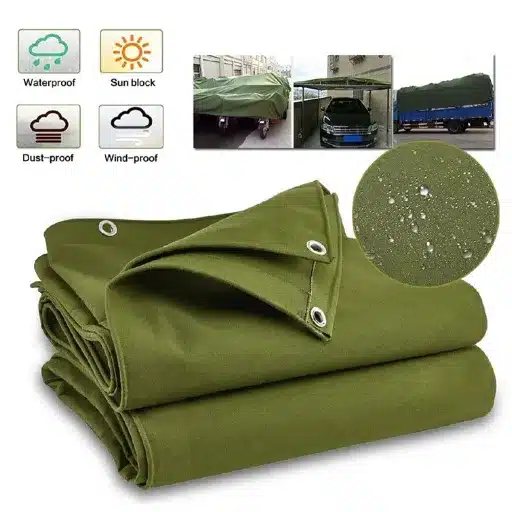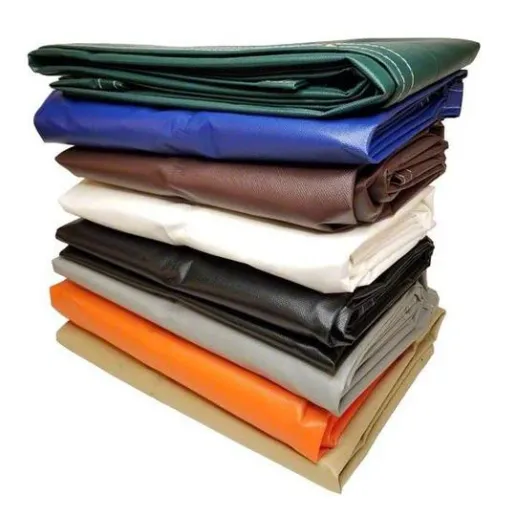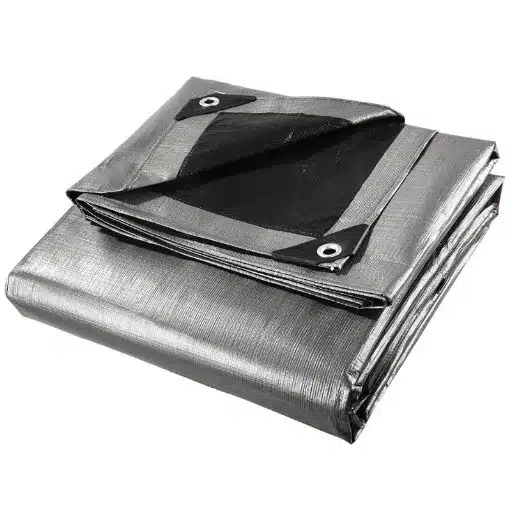People often turn to tarpaulins because they are sturdy and multipurpose, regardless of the type of task one might have in mind. When it comes to extended outdoor use, this is understandable. People usually wonder how extensive a tarp makes protection. The coverage and the time in use are vital concerns for people. Weather changes, the quality of the material, and the type of material used are the factors maintaining a tarp. Moreover, it is easy to learn the kinds of materials that would maintain tarps. In this article, you will learn about the maintenance of tarp coverings and which methods are the most effective. Individuals that have to shield devices, and locations, or even the tarp coverings from the sun will benefit from this article. At the end, one will have complete knowledge of practical maintenance.
Understanding Tarpaulin Lifespan
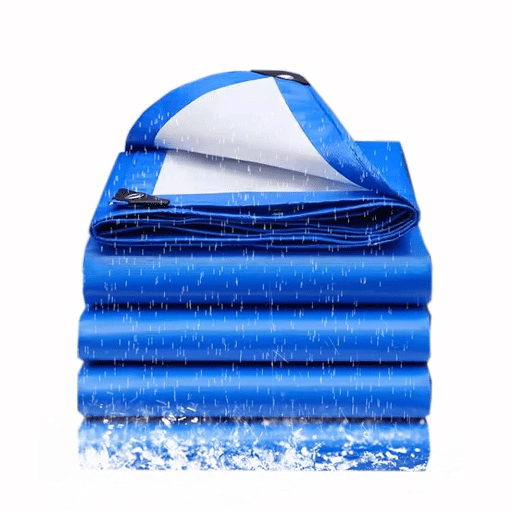
What Impacts a Tarp’s Longevity?
A tarp’s wear is affected by a variety of factors. Tarp materials vary from heavy-duty polyethylene, vinyl, canvas, and polyethylene. The thickness of these materials can significantly influence the tarp’s wear. The use of lower quality tarps (especially non-heavy duty tarps or covers) can cause severe wear and tear.
Excessive damage, such as rips, hails, excessive snow, and UV damage, can also decrease the lifespan of a tarp. Countering with an automated system can offset this. UV resistance combats effects such as sunlight damage increasing materials brittleness and reduce impact caused by rain and wind.
There also are additional precautions, such as routinely cleaning the tarp to reduce the impact of molds, disinfecting, and, if necessary, due to heavy-duty use, repairs. Each of which has a significant impact on how long the tarp can perform intended functions.
Comparing Tarp Material Lifespans
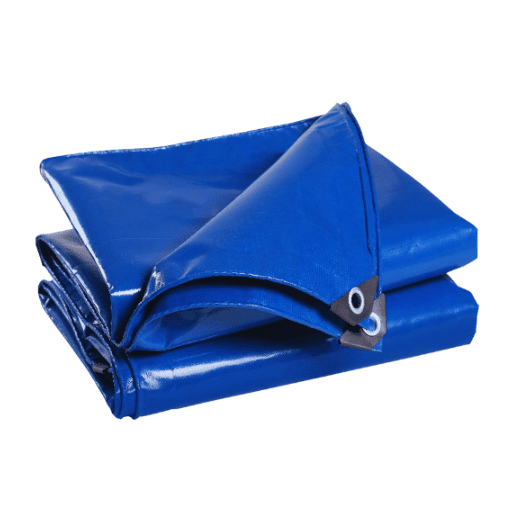
The lifespan of a tarp is greatly affected by the material and how it is kept. From the tarp materials that people commonly use, the tarp made from polyethylene generally lasts from 1 to 3 years under continuous outdoor use. Even though they are cheap, these tarps are not going to make it for a long period of time because they are so lightweight.
Alternatively, it’s worth noting that PVC and UV tarpaulins do really well under the aggressive sun and come in two-phase – the first is the aggressiveness of the chemicals, and the second is the aggressive sun. With reasonable care, PVC-maint and last totals from 5 to 10 years, which fits heavy and industrial applications.
The shrine is made of fired CANVAS, is fire and chemical resistant, and is UV resistant, but it needs to be stored well. Its lifetime is found to be around 5 to 8 years, which surpasses the best tarps.
Market data shows different innovations for advanced treated and robust coats are uniquely positioned to extend the lives of these fabrics. UV tarpaulins, used areas that require less upkeep, are now being sustained for up to 5 years and have proved to be more durable. For instance, reinforced UV-grade polyethylene tarpaulins are now offered as a tough substance, offering up to 5 years of durability and resemble the better levels of CANVAS.
💡 Key Takeaway: The choice of tarp material becomes very crucial to the project in mind and maintenance that the tarp may require, and it also helps to reduce the lifespan and avoid the need for constant replacement.
The Average Life of a PVC Tarp
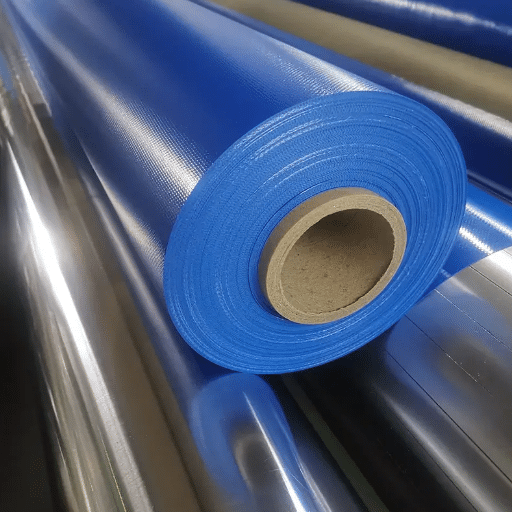
Fibre-reinforced PVC tarpaulins can be expected to last for a period of 5 to 10 years however, regular use and care and climate conditions including that they are not overly exposed to direct sunlight may be able to push the upper limit of the lifetime.
The harsh climate conditions and high exposure to UV rays with heavy work abuse typically shortens the life. The UV and fabric technology advances help the modern PVC tarpaulins, especially the tarps coated with UV-resistant coatings, and, with some technologies and tarpaulins, these tarpaulins last for longer.
Proper maintenance, including regular cleaning, timely repair, and correct storage, ensures longer durability and better performance.
Factors Influencing Tarp Durability
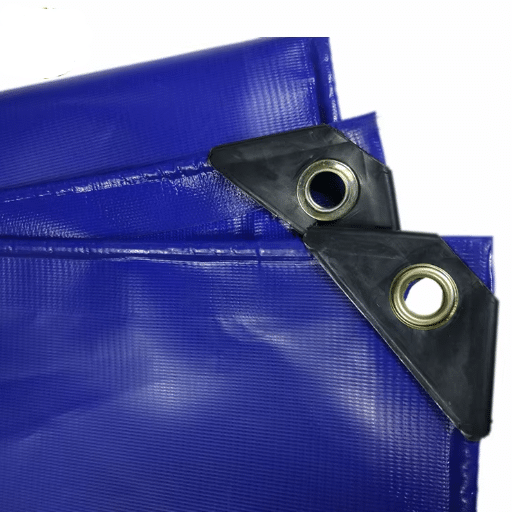
The Damage Caused By UV-Rays To Tarpaulins
The destruction of tarpaulins over time is inevitable. UV rays, one of the leaders in the destruction, causes materials to weaken and eventually fade, and sometimes due to the accelerated exposure of sunlight, even crack. Cracks, weakening, and fading are consequences to tarp materials due to the breakdown of their molecular structure caused by UV radiation, to contain construction industry.
To combat this, manufacturers are adding better UV-resistant coatings into protective overlays. The coatings prevent harmful rays from reaching the tarp material, aiding in its durability. As per studies, tarps with proper UV protection can last for 5 to 7 years even under harsh sun conditions.
To prevent further cracking, users are advised to keep them covered when not in use and out of the sun.
Optimizing Tarp Material Usage in Various Weather Conditions
The use and consisting use of weather and nature’s influences have a profound impact on the way materials perform. Generally, the winds coupled with other environmental elements aid in the durability of tarp materials to a larger extent. This can be attributed to the aid of the intense heat which is often harnessed on modified form of polyethylene.
High humidity, on the other hand, accompanied by the heavy polyethylene rains, can lead to mouldy and mildewy altered forms of fabrics with very poor or damaged weaves. The wind also poses a challenge is the face of relentless agitations. The wind can easily lead water seepage if the tarp is not treated or the mesh is not fastened.
The tearing and fraying of tarp usually occurs if the fastenings are not done in the right manner. The current global trends that are reflected provide further insight on the need for proper maintenance and use of tarpaulins considering climatic changes. With the proper understanding of the environmental conditions, tarp and the alterations of its exposure, tarp users are well positioned to ameliorate, to a greater extent, the lifespan of such materials as well as the integrities that accompany them.
Use Cases and Tarp Life Expectancy
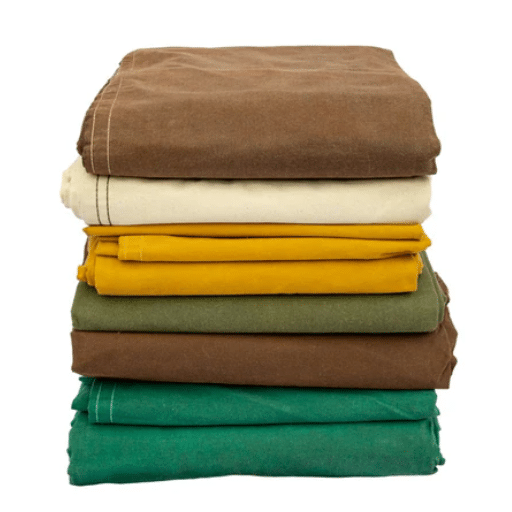
The amount of time a tarp is being used determines how long it will last. A tarp’s life is affected by its exposure to natural elements such as heat, rain, and wind. The heavy duty tarp mentioned earlier can be used for a range of purposes because it is now more heat and tears proof.
From this, users can gather that while the tarp’s use is deep, it is also being constructed to last. The global seach for ‘s engine data indicates a rise of interest in people looking to know the impact of routine tarp care and maintenance as well as how long should a tarp’s life be.
A tarp with heavy UV coatings and reinforced edges is appropriate for harsh environments because of proper use and handling. Installation and proper handling of a tarp entails protection from sharp metals and hence, rarely should sharp maschine be in contact with the tarp.
In the event a tarp is in contact with sharp equipments and metallic surfaces, it is always advisable to ensure frequent cleaning and checks in conjuction with maintenance and storage as this increases the duration of the tarp.
Maximizing the Lifespan of Your Tarpaulin
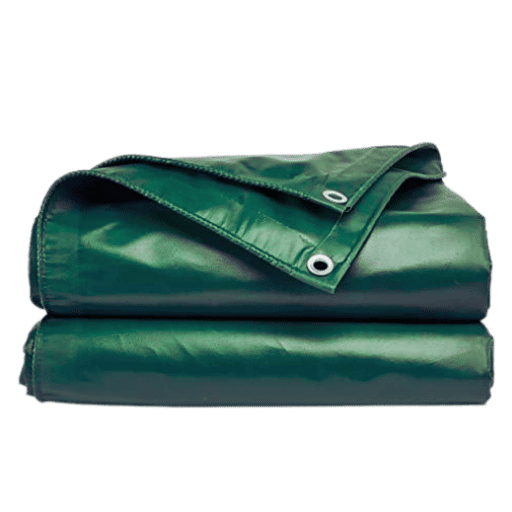
How To Clean Tarps
- Remove Debris:
Clean off the any debris such as dust dirt, leaves, and loose grime from the tarps using a soft broom or a soft cloth. - Soak in Solution:
Soak the tarp in a solution of warm water and gentle detergent or mild soap. It is highly advisable to not use bleach or any strong chemicals as those can severely weaken the tarp’s material and make it crack. - Scrub Gently:
Once you have soaked the tarp, it is mellower and ready to be cleansed with a soft-bristled brush or an old sponge to easily remove stains. Remember to take care in heavily soiled areas. - Rinse Thoroughly:
Once the cleansing ordeal is over, wash the tarp with a cool stream of water to rid of any soapy residue which could end up attracting grime the moment it is washed. - Dry Completely:
When you are ready to fold or put away the tarp, make sure the tarp completely dry, so it does not grow mold or mildew. - Apply UV Protection:
Consider using a UV-protective spray on the tarp after cleaning, to protect the tarp from the harsh sun rays and keep it elastic for a longer period.
Storing Tarpaulins Properly
A properly stored tarpaulin can last for many years and do its job well. The first thing you should do is fold the tarp neatly and tightly. This not only avoids folding creases but also avoids unnecessary wear.
- Storage Environment: Keep it in a cool and dry storage area, as extreme temperatures can ruin the tarp material over time.
- Protection: Store the tarp in a bag or a container to avoid dust, pests, and moisture.
- Large Tarps: For larger tarpaulins, avoid folding strain and hang their tarps on racks or hooks.
- Seasonal Care: If your tarp is being used for a particular season, before storing, inspect it for any seasonal wear and make any necessary repairs.
By following the best practices, you are enrolling your tarp for a great care card and hassle-free, on-demand access when it is required.
The Use of Tarp Coatings for Tarp Material
Using protective coatings on tarp material is a simple solution to maintaining the effectiveness of tarpaulins and prolonging their lifespan. According to recent studies, the most appropriate type of coating for tarpaulins is the UV-resistant coating. These coatings are designed to block UV rays that are harmful to a person’s skin. This prevents the fabric of the tarp from degrading quickly due to exposure to UV rays and prolongs the life of the tarp.
Waterproof fabric and sealants are recommended for tarps exposed to heavy moisture spray. This is because the water repelling barrier is very easy to form; hence, the moisture does not damage the fabric of the tarpaulin.
Additionally, with tarps that have metal parts, an anti-corrosion treatment can be done to prevent the metal parts from corroding and wearing off. Just like with the UV-resistant coatings, less wear and tear is guaranteed. Sticking to the manufacturer’s instructions prevents the wear on the tarpaulin, prolonging the life of the tarp.
Types of Tarps and Their Specific Uses
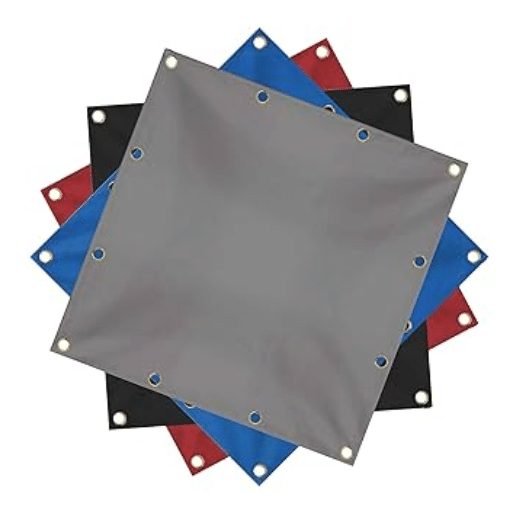
PVC Tarpaulins of Top-Tier Quality for Open-air Utilization
The best PVC tarpaulins have been lauded for being tough and able to last a long time under intense climatic conditions, such as heavy rainfall and extended strong winds and UV rays. To preserve one’s auotmobiiles, safeguard construction sites or simply use them as makeshift shelter roofing, PVC tarpaulins find themselves to the most cost-effective and reliable choice.
Moreover, users ask about the flexible and waterproof nature of the PVC and how it can manage both personal and industrial needs. Another thing to be noted is that PVC in general is one of the most environmentally friendly materials to use which is perfect for prolonged use when a clean place is needed for depot, diaster relief, warehouses and many other aspecs to have shelter in compare to other materials out there.
Vinyl vs. Canvas vs. Other Methods of Tarp Creation
All else being equal, the very best vinyl tarps are substantially sturdier and have far longer life spans when compared to their polyethylene counterparts. Polyehtylene is much lighter and less costly than other materials meant for tarp creation including vinyl. All the good vinyl tarp characteristics come with specific vinyl tarp use and are easy to repair and recycle, wich is in ethical tarp disposal.
Current vinyl tarp search queries suggest that pros have been very keen in adopting their—especially those in the construction, transportation, and farming industries, as they are able to stand up to what the elements can throw at them while still being to maintain their structure. Furthermore, the easy repairs and recyclability align with modern sustainability goals. This is likely to increase the adoption for vinyl tarps by professionals and even end users.
Everyday Usage: Building, Agriculture, and Camping
🏗️ Building Industry
The use of building covers is steadily growing in the building industry. The use of vinyl tarps as building covers is on demand especially in use as storage coveres, protecting buildings from weather components under construction, and building structures in new markets.
🚜 Agriculture Industry
Vinyl tarps usage in the agriculture industry is also on the rise, vinyl covers are used for covering farming equipment, bales, and even in protecting harvests, and the good thing is, the covers are durable and are used more that once unlike other covers of the same kind.
⛺ Camping
In camping, finding vinyl tarps that can be used as ground covers, rainflys, and shelters is of interest. The tarps are appreciated for being adaptable and being able to withstand harsh conditions with excellent water sealing.
Frequently Asked Questions
Reference Sources
- Virginia Tech Extension: Discusses the UV ratings and lifespan of silage tarps, noting that their durability ranges from 1.5 to 4 years, with proper care extending their life to up to 6 years.
- University of Maine Extension: Provides insights into the general lifespan of tarps, which can vary by type from 2 to 10 years, and offers recommendations for outdoor storage to extend their durability.
- University of Minnesota Extension: Highlights the importance of using good plastic coverings, such as tarps, for outdoor storage to reduce losses and improve longevity.

